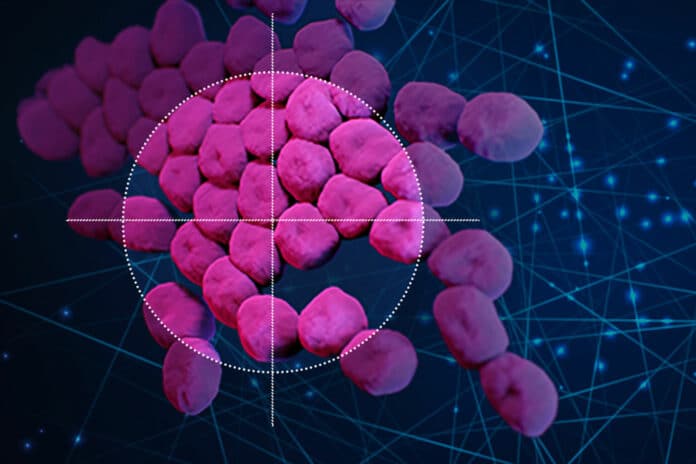Gram-negative nosocomial pathogen Acinetobacter baumannii frequently exhibits multidrug resistance. Through standard screening techniques, it has been difficult to find novel antibiotics to treat A. baumannii. Fortunately, machine learning techniques allow for exploring chemical space quickly, boosting the likelihood of finding new antibacterial compounds.
MIT and McMaster University researchers have discovered a novel antibiotic capable of killing a particular type of bacterium that frequently causes infections that are resistant to treatment using an artificial intelligence system.
If made available to patients, the drug might aid in the fight against Acinetobacter baumannii.
The researchers used a machine-learning algorithm they built to assess whether a chemical molecule can impede the growth of A. baumannii to find the novel medicine from a library of roughly 7,000 possible medicinal compounds.
James Collins, the Termeer Professor of Medical Engineering and Science in MIT’s Institute for Medical Engineering and Science (IMES) and Department of Biological Engineering, said, “This finding further supports the premise that AI can significantly accelerate and expand our search for novel antibiotics. I’m excited that this work shows we can use AI to help combat problematic pathogens such as A. baumannii.”
The researchers’ initial demonstration included training a machine-learning system to recognize chemical compounds that might prevent E. coli from growing. This algorithm generated a molecule in a screen of more than 100 million molecules that the researchers named salicin after the fictional artificial intelligence system from “2001: A Space Odyssey.” They demonstrated that this chemical might eradicate several drug-resistant bacterial species besides E. coli.
Stokes said, “After that paper when we showed that these machine-learning approaches can work well for complex antibiotic discovery tasks, we turned our attention to what I perceive to be public enemy No. 1 for multidrug-resistant bacterial infections, which is Acinetobacter.”
The researchers first tested roughly 7,500 different chemical compounds on A. baumannii growing in a lab dish to see which ones could hinder the microbe’s development to gather training data for their computational model. Then they supplied the model of the structure of each molecule. Additionally, they indicated to the model whether or not each structure may prevent bacterial development. This enabled the algorithm to discover chemical characteristics linked to growth inhibition.
After the model had been trained, the researchers used it to examine a batch of 6,680 new molecules from the Broad Institute’s Drug Repurposing Hub. A few hundred top hits came from this analysis, which took less than two hours. To test experimentally in the lab, the researchers selected 240, concentrating on substances with structures distinct from those of already available antibiotics or molecules from the training set.
Nine antibiotics, including one with high potency, were found in those tests. This substance, which was initially investigated as a potential diabetic medication, proved to be highly efficient against A. baumannii but ineffective against other bacterial species like Pseudomonas aeruginosa, Staphylococcus aureus, and carbapenem-resistant bacteria.
This “narrow spectrum” killing capacity makes antibiotics desirable since it reduces the possibility of bacteria quickly developing drug resistance. Another benefit of the medication is that it probably won’t harm the good bacteria in the human stomach that fight opportunistic infections like Clostridium difficile.
Stokes said, “Antibiotics often have to be administered systemically, and the last thing you want to do is cause significant dysbiosis and open up these already sick patients to secondary infections.”
The drug, again, was demonstrated to be effective in treating wound infections brought on by A. baumannii in experiments on mice. Additionally, they demonstrated through laboratory experiments that it is effective against several drug-resistant A. baumannii strains obtained from patients.
Additional research demonstrated that the drug kills cells by obstructing lipoprotein trafficking, which cells employ to move proteins from the cell’s interior to the cell membrane. In particular, LolE, a protein implicated in this pathway, appears to be inhibited by the drug.
The discovery that abduction is so specific in targeting A. baumannii astonished the researchers because all Gram-negative bacteria express this enzyme. They speculate that minute variations in A. baumannii’s performance of this task could be to blame.
Stokes says, “We haven’t finalized the experimental data acquisition yet, but we think it’s because A. baumannii does lipoprotein trafficking a little bit differently than other Gram-negative species. We believe that’s why we’re getting this narrow spectrum activity.”
Journal Reference:
- Liu, G., Catacutan, D.B., Rathod, K., et al. Deep learning-guided discovery of an antibiotic targeting Acinetobacter baumannii. Nat Chem Biol (2023). DOI: 10.1038/s41589-023-01349-8
